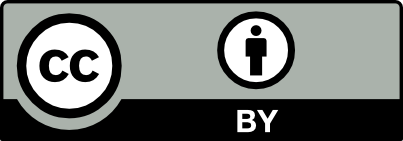Definition of a data model that includes the instructional design to describe the elements involved in the design of virtual courses
DOI:
https://doi.org/10.18046/syt.v14i36.2215Keywords:
Data model, instructional design, virtual course.Abstract
Conventional software engineering methodologies have strategies for analysis and design of educational software applications, but they have evolved in relation to the phase of the instructional design. In this article, from the review of some models of instructional design and the identification of gaps in two proposed models for the design of virtual courses, a data model is proposed to describe the elements involved in the design of virtual courses and illustrate the relationships between such elements. In preparing this model, we take into account the activities of some models of instructional design. The construction of this data model is a contribution to formalize the design of virtual courses.References
Agudelo, D. & Carmona, L. (2012). Prototipo web educativo [trabajo de grado]. Universidad Católica de Pereira: Colombia.
Branson, R., Rayner, G. Cox, J.L., Furman, J.P., Hannum, W.H.. (1975). Interservices Procedures for Instructional Systems Development [report to US Army Combat Arms Training Board ADA 019 486]. Retrieved from: http://www.dtic.mil/dtic/tr/fulltext/u2/a019486.pdf
Dick, W., Carey, L., & Carey, J.O. (2005). The systematic design of instruction [6a. ed.]. New York, NY: Allyn & Bacon.
Heinich, S., Molenda, J., Russel, R., & Smaldino, M. (1999). The ASSURE model: instructional media and technologies for learning. Upper Saddle River, NJ: Pearson.
Miller, S. M. & Miller, K. L. (2000). Theoretical and practical considerations in the design of Web-based instruction. In: B. Abbey (Ed.), Instructional and cognitive impacts of web-based education. Hershey, PA: Idea Group Publishing.
Ministerio de Educación Nacional [MEN]. (2011). Orientaciones para el diseño, producción e implementación de cursos virtuales [working paper]. Bogotá DC, Colombia: MEN.
Quispe, L. & Quispe, R. (2011). Proyecto de sistema “aula virtual” [trabajo de grado]. Instituto Continental: Huancayo, Perú.
Reigeluth, C.M. (1983). Instructional design: what is it and why is it? In C.M. Reigeluth (Ed.), Instructional design theories an models: an overview of their current status. Hillsdale, NJ: Eribaum.
Saettler, P. (2004). The evolution of American educational technology. Charlotte, NC: Information Age Publishing.
Vidal, M., Gómez, F., & Ruiz, A. (2010). Software educativo. Educación Médica Superior, 24(1), 97-110.
Branson, R., Rayner, G. Cox, J.L., Furman, J.P., Hannum, W.H.. (1975). Interservices Procedures for Instructional Systems Development [report to US Army Combat Arms Training Board ADA 019 486]. Retrieved from: http://www.dtic.mil/dtic/tr/fulltext/u2/a019486.pdf
Dick, W., Carey, L., & Carey, J.O. (2005). The systematic design of instruction [6a. ed.]. New York, NY: Allyn & Bacon.
Heinich, S., Molenda, J., Russel, R., & Smaldino, M. (1999). The ASSURE model: instructional media and technologies for learning. Upper Saddle River, NJ: Pearson.
Miller, S. M. & Miller, K. L. (2000). Theoretical and practical considerations in the design of Web-based instruction. In: B. Abbey (Ed.), Instructional and cognitive impacts of web-based education. Hershey, PA: Idea Group Publishing.
Ministerio de Educación Nacional [MEN]. (2011). Orientaciones para el diseño, producción e implementación de cursos virtuales [working paper]. Bogotá DC, Colombia: MEN.
Quispe, L. & Quispe, R. (2011). Proyecto de sistema “aula virtual” [trabajo de grado]. Instituto Continental: Huancayo, Perú.
Reigeluth, C.M. (1983). Instructional design: what is it and why is it? In C.M. Reigeluth (Ed.), Instructional design theories an models: an overview of their current status. Hillsdale, NJ: Eribaum.
Saettler, P. (2004). The evolution of American educational technology. Charlotte, NC: Information Age Publishing.
Vidal, M., Gómez, F., & Ruiz, A. (2010). Software educativo. Educación Médica Superior, 24(1), 97-110.
Downloads
Published
2016-03-30
Issue
Section
Discussion papers
License
This journal is licensed under the terms of the CC BY 4.0 licence (https://creativecommons.org/licenses/by/4.0/legalcode).


